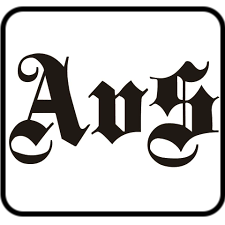A playful legacy
15.08.2025 Arts & CultureART TALK | A Playful Precision
Studio Naegeli unveils the private world of Trix and Robert Haussmann
In the design and architecture world, Trix and Robert Haussmann are revered as radical visionaries, architects of Zurich’s central station, creators of the iconic Kronenhalle Bar, and pioneers in rethinking spatial experience. But beyond their public acclaim lies a quieter, more intimate story, one of private drawings, surrealist sketches, kinetic cubes, and playful prototypes. Now, for the first time, this lesser-known world is stepping out into the light.
Studio Naegeli’s current exhibition, Geometrically Quixotic, does more than just celebrate the Haussmanns’ work. It invites viewers into their home, their studio, and their shared creative process. The exhibition showcases pieces that, until now, have remained in their personal archives, hung on their apartment walls, used in daily life, or stashed away as playful experiments never meant for public display.
“It’s a very emotional exhibition for us,” says curator Anna Högl, who worked directly with Trix Haussmann, now 91, to assemble the show. “Some of the drawings and paintings have never left their apartment. Others were part of their daily dialogue, a postcard sent across time zones, a drawing on the coffee table, or a collage built around an inside joke.”
While the couple’s architectural achievements are well documented, this exhibition offers something radically different: an encounter with the Haussmanns as conceptual artists and playful philosophers. Their long-standing theory of manierismo critico—a critical, Swiss take on Italian Mannerism—runs like a current throughout the works. Whether through mirrored cubes that distort dimensions, wooden furniture disguised as marble, or dice-determined colour schemes, their aim was to break free from the rigidity of modernism and let chance, humour, and poetry infiltrate the grid.
One of the most striking elements of the show is how much of the work blurs boundaries between art, design, and architecture. Furniture doubles as sculpture. Columns open into drawers. Boxes morph into illusions through a single added mirror. Even their “ruler of horns”, a linear artwork constructed from architectural theory terms, is simultaneously a measuring device, a conceptual joke, and an aesthetic statement.
Importantly, many of the works come from private collections or directly from the Haussmanns’ own archive. Some are not for sale. Others are now accessible again after being in private hands for decades. “We started discussing the possibility of the exhibition quite some time ago, and Trix was very actively involved in the preparation process,” Högl explains. “We were happy that she liked our idea to focus on the aleatoric aspects of their work and to highlight their sense of humour and playfulness in the exhibition.”
This spirit of playfulness is central to the exhibition’s curatorial narrative. In a field known for its precision and rigidity, Trix and Robert Haussmann were never afraid to be light-hearted. They experimented with dice and chance, played with illusions and mirrored distortions, and constantly subverted the “form follows function” mantra with the unexpected.
Yet, as playful as the works may be, they are anything but frivolous. Behind each illusion lies masterful craftsmanship. A wooden column requiring 400 hours of carpentry. Custom pieces were manufactured in tiny editions because they were simply too complex to reproduce. Collaborations with Switzerland’s top furniture makers, like Rö, who still train in the same artisanal tradition today.
The result is an exhibition that doesn’t just show objects, it tells a story. A story of two artists-architects, life partners, and co-conspirators in a decades-long exploration of what it means to create space, and what it means to live within it.
With Geometrically Quixotic, Studio Naegeli positions itself not just as a gallery, but as a site of cultural discovery, uncovering works that challenge how we define architecture, art, and the very concept of function. For Gstaad, it’s a cultural coup. For the world of design, it’s a gentle revolution.
Exhibition runs through the autumn. Learn more and visit the website
Jeanette Wichmann










